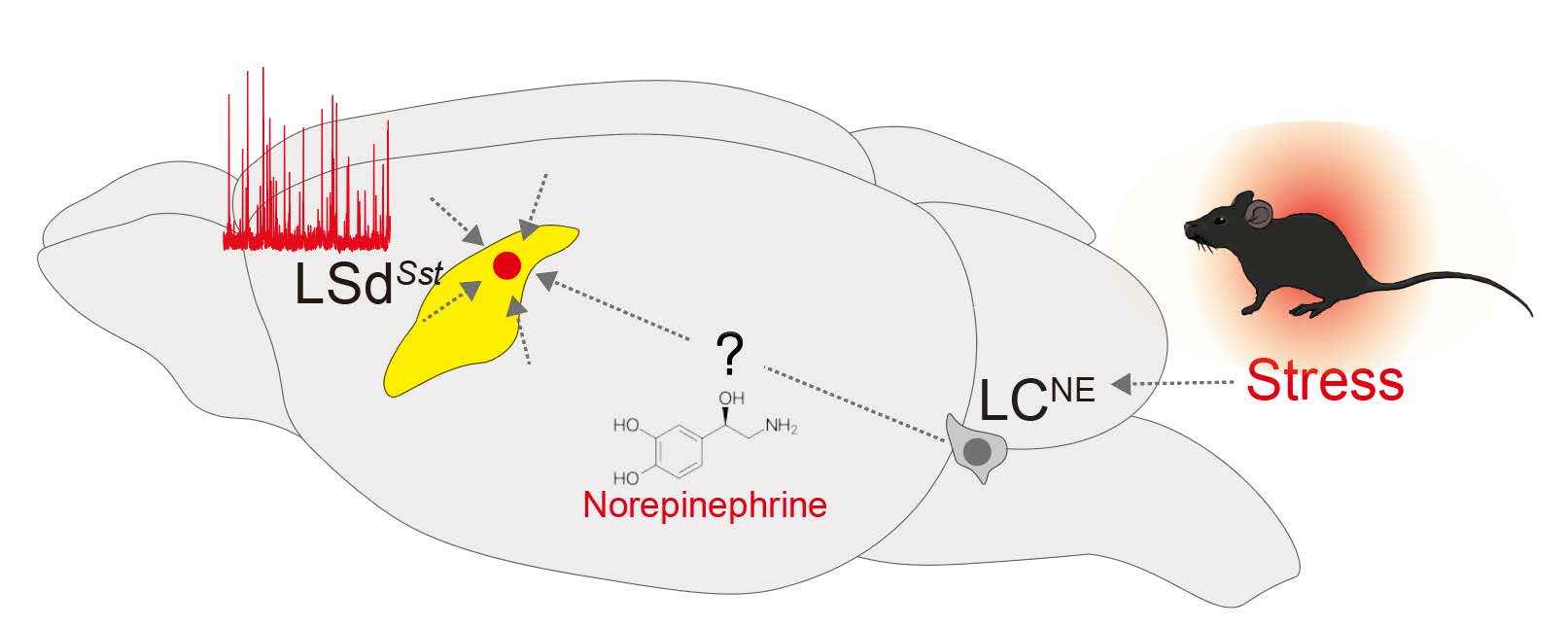Articles
Article Tools
Stats or Metrics
Article
Original Article
Exp Neurobiol 2022; 31(6): 376-389
Published online December 31, 2022
https://doi.org/10.5607/en22024
© The Korean Society for Brain and Neural Sciences
Lateral Septum Somatostatin Neurons are Activated by Diverse Stressors
Myungmo An1,2†, Hyun-Kyung Kim1,2†, Hoyong Park3†, Kyunghoe Kim1,2, Gyuryang Heo1, Han-Eol Park1, ChiHye Chung3* and Sung-Yon Kim1,2*
1Institute of Molecular Biology and Genetics, Seoul National University, Seoul 08826, 2Department of Chemistry, Seoul National University, Seoul 08826, 3Department of Biological Sciences, Konkuk University, Seoul 05029, Korea
Correspondence to: *To whom correspondence should be addressed.
Sung-Yon Kim, TEL: 82-2-880-4994
e-mail: sungyonkim@snu.ac.kr
ChiHye Chung, TEL: 82-2-450-0432
e-mail: cchung@konkuk.ac.kr
†These authors contributed equally to this article.
This is an Open Access article distributed under the terms of the Creative Commons Attribution Non-Commercial License (http://creativecommons.org/licenses/by-nc/4.0) which permits unrestricted non-commercial use, distribution, and reproduction in any medium, provided the original work is properly cited.
Abstract
The lateral septum (LS) is a forebrain structure that has been implicated in a wide range of behavioral and physiological responses to stress. However, the specific populations of neurons in the LS that mediate stress responses remain incompletely understood. Here, we show that neurons in the dorsal lateral septum (LSd) that express the somatostatin gene (hereafter, LSd
Graphical Abstract

Keywords: Stress, Norepinephrine, Somatostatin, Lateral septum, Locus coeruleus


